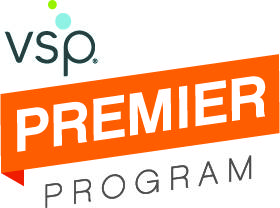Occupational bifocals and trifocals are specialized multifocal lenses created for specific jobs, hobbies or tasks. They are designed for people – generally over 40 – who have developed presbyopia, a condition in which the lens of the eye weakens and it becomes difficult to see objects that are close up. They differ from regular multifocal lenses in that the magnified power areas to see close and intermediate objects are typically larger and positioned in a different area on the lens, according to needs of the designated task.
Occupational bifocal and trifocal lenses are intended for specific tasks and not for everyday use. Here are a few examples:
Double-D Lenses
The most popular type of occupational lens is the Double-D lens. The lens is divided into three segments, with the top designed for intermediate vision, the bottom segment for near vision and the rest for distance. This design is ideal for people who need to see close both when looking down (to read something) and when looking overhead. Professionals that frequently use Double-D lenses are auto mechanics (who have to look overhead when under a car), librarians, clerks or office workers, (who have to look at shelves overhead) or electricians (that are often involved in close work on a ceiling). They are called Double-D lenses because the intermediate and near segments of the lens are shaped like the letter “D”.
E-D Trifocal Lenses
As opposed to Double-D lenses which have the majority of the lens for distance vision, E-D lenses focus on intermediate vision with an area for distance on the top and for near vision on the bottom. These are ideal for individuals who are working at about an arm’s-length away the majority of the time, such as on a multiple computer or television screens, but frequently need to look up into the distance or close to read something. The “E” in the name stands for “Executive Style” which represents the division between the top distance vision lens and the bottom intermediate vision lens which goes all the way across the lens. “D” in the name of the lens is due to the fact that the near section in the bottom of the lens is shaped like a “D”.
Office or Computer Glasses
Multifocal lenses designed for office work provides the largest section with an intermediate lens designated for viewing the computer screen and a smaller area for limited distance vision. You can have progressive or trifocal lenses that incorporate near vision as well.
Golf Bifocals
That’s right, there are even specialized lenses made for golfers! Golfers need to see a wide range of distances during their game from their scorecard, to their ball on the tee, to hole far away to line up their drive. In these lenses, the close segment is small and placed on an outer corner of one lens, to allow for brief close vision but not interfere with the distance game. Usually, right handed golfers will have the lens on the right side and vice versa.
Personalized Lenses
Standard multifocals can be redesigned to adapt to specific tasks or hobbies simply by changing the size, shape or location of the different segments. Many adults over 40 would benefit from having multiple pairs of multifocals to give optimal vision for different tasks or hobbies they enjoy. Note that occupational lenses are made specifically for the task they are designed for and should not be worn full-time, especially while driving.

